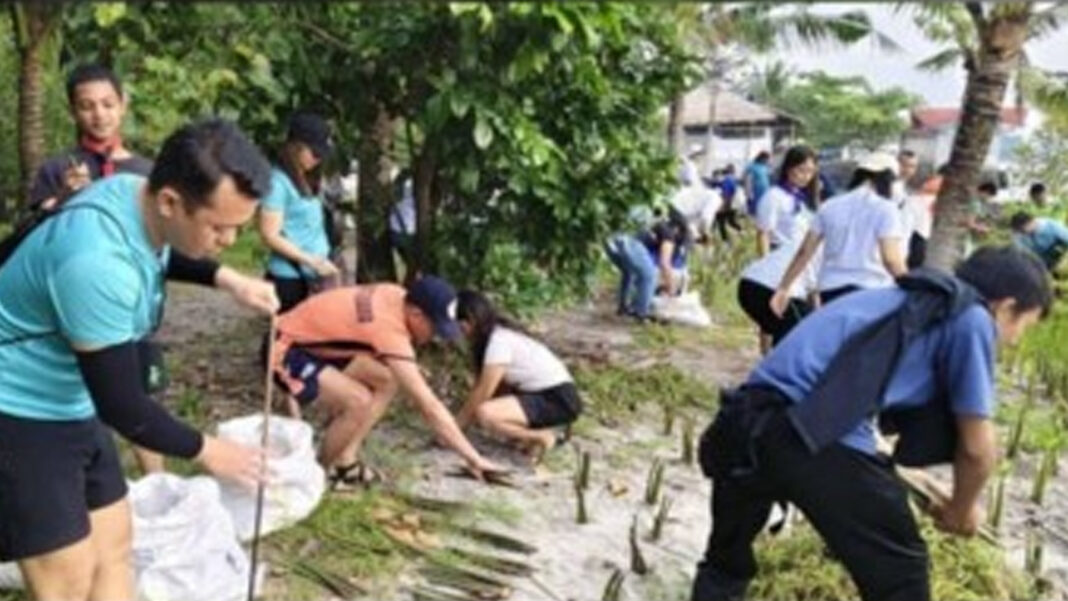The multisectoral Allied Mangrove Planting Organizations (AMPO) has planted over 1.3 million mangroves in Negros Oriental in the past decade in an effort to combat climate change and safeguard the environment.
AMPO is a coalition of like-minded non-governmental groups, government agencies and individuals dedicated to protecting the environment and reforesting Negros Island’s coastlines, Southeast Asian countries and Japan, lead collaborator Sidney Lee said in an interview on Monday.
Lee said they started planting and rehabilitating mangroves in 2015, spearheaded by the Negros Oriental Association of ROTC Corps Commanders, after seeing the dwindling sea forest in Tanjay City.
“Other organizations began noticing the effort and later on joined the independently funded and organized activities of NORACC, turning it into the gigantic consortium that it is now”, he said.
In the same year, AMPO became a partner of the “10 Million in 10 Years for a Greener Negros” (10M in 10) project, initiated by the Energy Development Corporation and Department of Environment and Natural Resources (DENR), pledging to plant 10,000 mangrove trees within the designated timeframe.
Lee recalls that by 2017, the alliance had reached its goal of planting 10,000 mangrove trees, but the efforts did not stop there. AMPO and its partners from the government and private sector endeavored to plant one million mangrove trees in the years that followed.
The alliance members decided to organize an annual mangrove planting event with alternating leadership roles and establish how to break the activity into smaller events aimed at planting 10,000 mangrove trees.
As of June this year, AMPO has collectively planted over 1.3 million mangrove trees at several sites across the province, in collaboration with local government units, Lee said. They are now moving toward their second goal of planting two million mangrove trees.
The original locations planted in the villages of San Isidro and Luka in Tanjay City 10 years ago are now filled with mature mangroves flourishing independently. AMPO regularly visits for the replacement of deceased trees.
Over the weekend, a mangrove planting activity was held in Barangay Banilad in this capital, with the Negros Oriental Chamber of Commerce and Industry taking the lead.
The alliance has expanded its activities in recent years to include the coastal areas of La Libertad and Manjuyod in the north, as well as Barangay Banilad in this provincial capital.
Based on assessments made by the DENR, the survival rate of the mangroves planted by AMPO is at 92 percent.
“For every 10,000 trees that we plant, we plant an extra 1,000 mangrove trees to account for mortality,” Lee said.
Mangroves act as natural barriers against waves and storms, with roots stabilizing shorelines and preventing erosion, and capture large amounts of carbon dioxide to offset greenhouse gases.
Lee said the coastal tree planting allows AMPO members to contribute to fighting climate change, protecting the environment, restoring biodiversity, disaster mitigation and decarbonization.
Although AMPO is not officially part of the nation’s decarbonization efforts, Lee said planting and restoring mangroves show their support for the country’s carbon sequestration initiatives.
Lee said some government and private institutions approached AMPO to collaborate and invited them to register the alliance to monitor their activities and contributions to reducing carbon emissions.
The alliance will issue certifications or carbon credits to members upon request, allowing them to participate in carbon trading. Still, Lee believes that this is the least concern of their 50 partner agencies at the moment.
“It is enough that we are doing our share of contributions to reducing carbon emissions and we are happy with the way things are going for us,” Lee said. (PNA)


